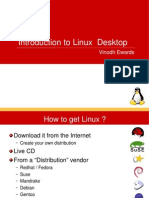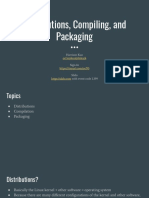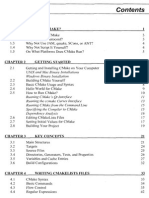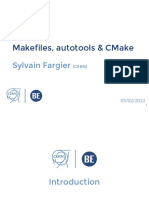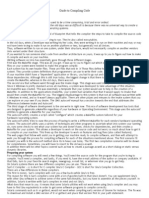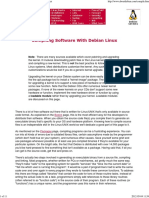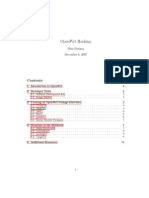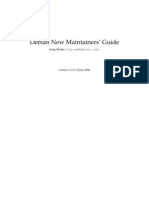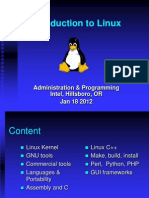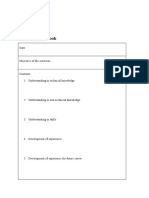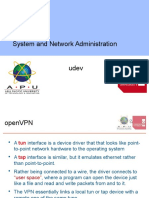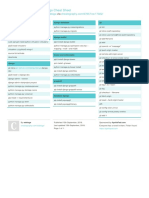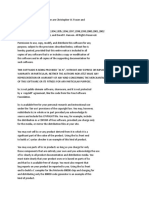0% found this document useful (0 votes)
49 views12 pagesSystem and Network Administration GCC & Make
This document discusses system and network administration topics such as:
1. It describes Linux distributions, source code, binary files, dependencies, and packages. It also discusses different package managers like apt-get, yum, and pkgtool.
2. It explains shared libraries and dynamic link libraries, how they are loaded into RAM and managed by the kernel. It discusses library dependencies.
3. It provides an overview of compiling software from source using gcc and make. It mentions the essential components of a Linux distribution and discusses building software on different distributions and versions.
Uploaded by
Arsalan JahaniCopyright
© © All Rights Reserved
We take content rights seriously. If you suspect this is your content, claim it here.
Available Formats
Download as PPTX, PDF, TXT or read online on Scribd
0% found this document useful (0 votes)
49 views12 pagesSystem and Network Administration GCC & Make
This document discusses system and network administration topics such as:
1. It describes Linux distributions, source code, binary files, dependencies, and packages. It also discusses different package managers like apt-get, yum, and pkgtool.
2. It explains shared libraries and dynamic link libraries, how they are loaded into RAM and managed by the kernel. It discusses library dependencies.
3. It provides an overview of compiling software from source using gcc and make. It mentions the essential components of a Linux distribution and discusses building software on different distributions and versions.
Uploaded by
Arsalan JahaniCopyright
© © All Rights Reserved
We take content rights seriously. If you suspect this is your content, claim it here.
Available Formats
Download as PPTX, PDF, TXT or read online on Scribd
/ 12





